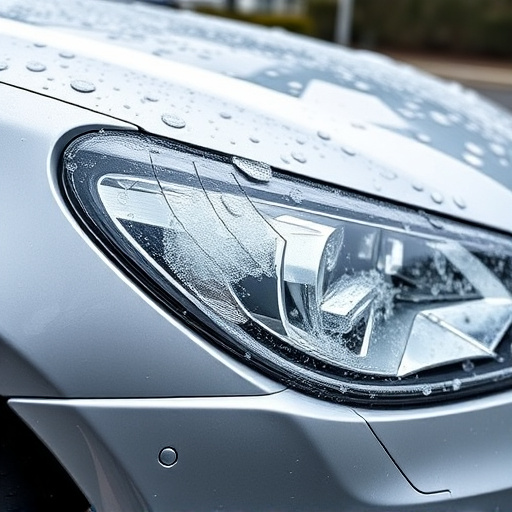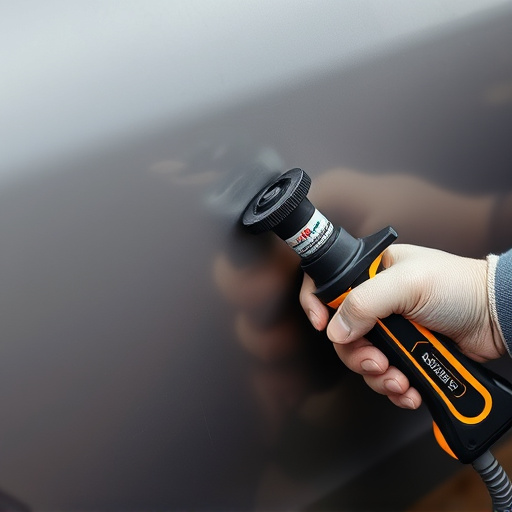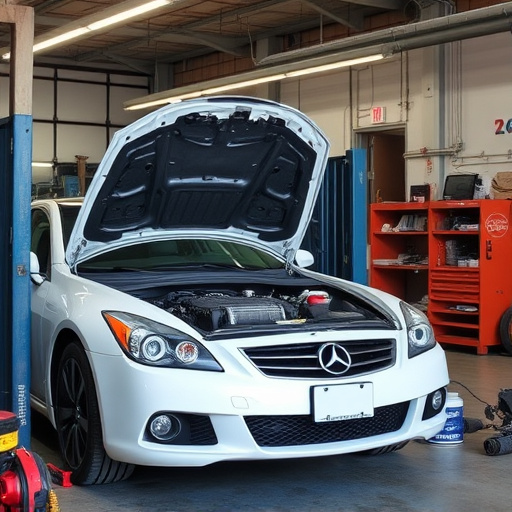Tesla's 12V system, integral to vehicle safety and functionality, differs from conventional car setups with high-voltage propulsion and battery storage. Common issues include power outages due to faulty connectors, corrosion, or fuse failures, leading to dashboard warnings, accessory malfunctions, or no-start situations. Regular maintenance and professional repair services are recommended for accurate diagnosis and resolution of persistent problems. Tesla provides advanced tools and diagnostic devices for efficient troubleshooting and restoration of system performance after collision repairs or other damage.
Unraveling the intricacies of Tesla’s 12V electrical system is crucial for efficient repairs. This guide offers a comprehensive overview of what to expect during diagnostic procedures, focusing on common issues and potential causes. From understanding the system’s inner workings to utilizing advanced diagnostic tools, this article equips you with knowledge to tackle Tesla 12V system repair challenges effectively.
- Understanding Tesla's 12V Electrical System
- Common Issues and Potential Causes
- Diagnostic Tools and Testing Procedures
Understanding Tesla's 12V Electrical System

Tesla’s 12V electrical system is a complex network that powers various components within the vehicle, from lighting and accessories to critical safety systems. Unlike traditional car setups, Tesla’s architecture leverages a high-voltage system for propulsion, storing energy in a large battery pack. The 12V component remains crucial for sustaining essential functions during accidents or power failures.
Understanding this system is vital for anyone considering Tesla 12V system repair, especially when visiting a collision center or auto body shop. Repairs often involve more than just fixing a short circuit; they may necessitate knowledge of how the system integrates with the vehicle’s overall design and functionality. This deep understanding ensures that repairs are not only effective but also preserve the safety and efficiency of Tesla vehicles, reflecting the advanced technology within their car bodies.
Common Issues and Potential Causes

Common Issues and Potential Causes in Tesla 12V System Repair
Tesla vehicles are known for their innovative technology, but like any complex system, the 12V electrical system can encounter issues over time. Common problems range from power outages due to faulty connectors or corroded terminals to intermittent fuse failures that disrupt critical components’ functionality. These issues often manifest as dashboard warning lights, failing accessories, or even no-start conditions.
Potential causes behind these problems include exposure to moisture or extreme temperatures, physical damage during vehicle accidents (requiring expert collision repair services), and aging parts. Regular maintenance checks can help identify potential issues early on, preventing more serious and costly repairs. In case of persistent problems, engaging professional Tesla 12V system repair services is recommended to ensure proper diagnosis and effective solutions, such as replacing worn-out components or addressing underbody corrosion (similar to vehicle restoration processes).
Diagnostic Tools and Testing Procedures

When it comes to diagnosing issues with Tesla’s 12V systems, the brand offers a suite of advanced tools tailored for efficient and precise repairs. These tools are designed to navigate the intricate electrical network, ensuring every component is thoroughly inspected and tested. Technicians can leverage specialized diagnostic devices that connect seamlessly to the vehicle’s onboard computer, enabling them to access real-time data and identify problems with accuracy.
The testing procedures involve a systematic approach, starting with voltage checks across various components to pinpoint power fluctuations or losses. This initial assessment is often followed by resistance measurements to detect any obstructions or faulty connections. For more complex issues, advanced diagnostic scans can uncover hidden errors in the system’s communication protocols. The process mimics that of a mercedes benz collision repair, where meticulous attention is given to restore the 12V system to its optimal functioning state, much like auto body repairs for a damaged vehicle.
Understanding Tesla’s 12V electrical system is key to effective repairs. By familiarizing yourself with common issues, their potential causes, and utilizing appropriate diagnostic tools, you’ll be well-equipped to navigate Tesla 12V system diagnostics. Armed with this knowledge, tackling minor issues promptly can prevent larger, costlier problems down the line, ensuring a smoother ownership experience for these cutting-edge electric vehicles. For more in-depth guidance, consider consulting professional resources dedicated to Tesla 12V system repair.














